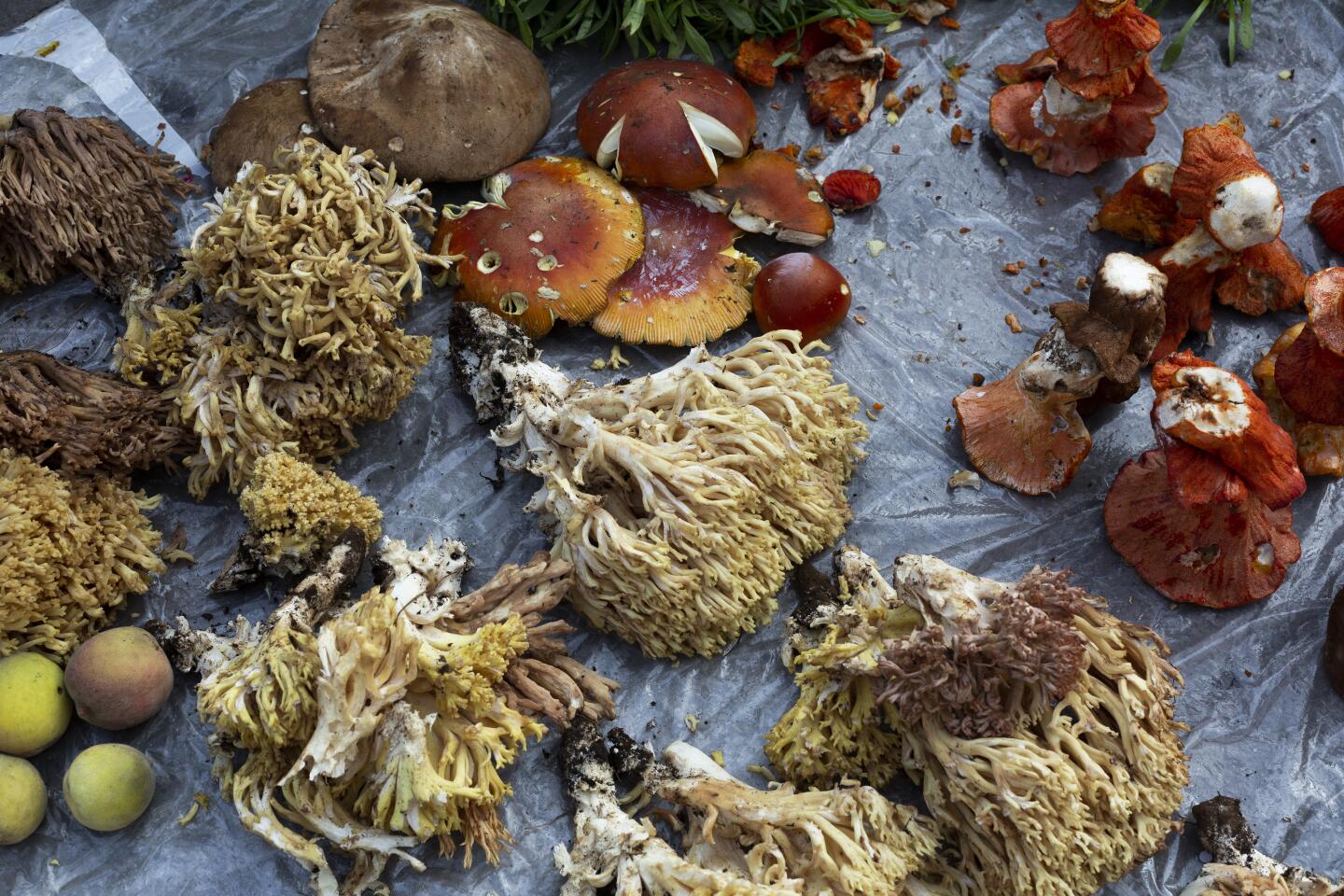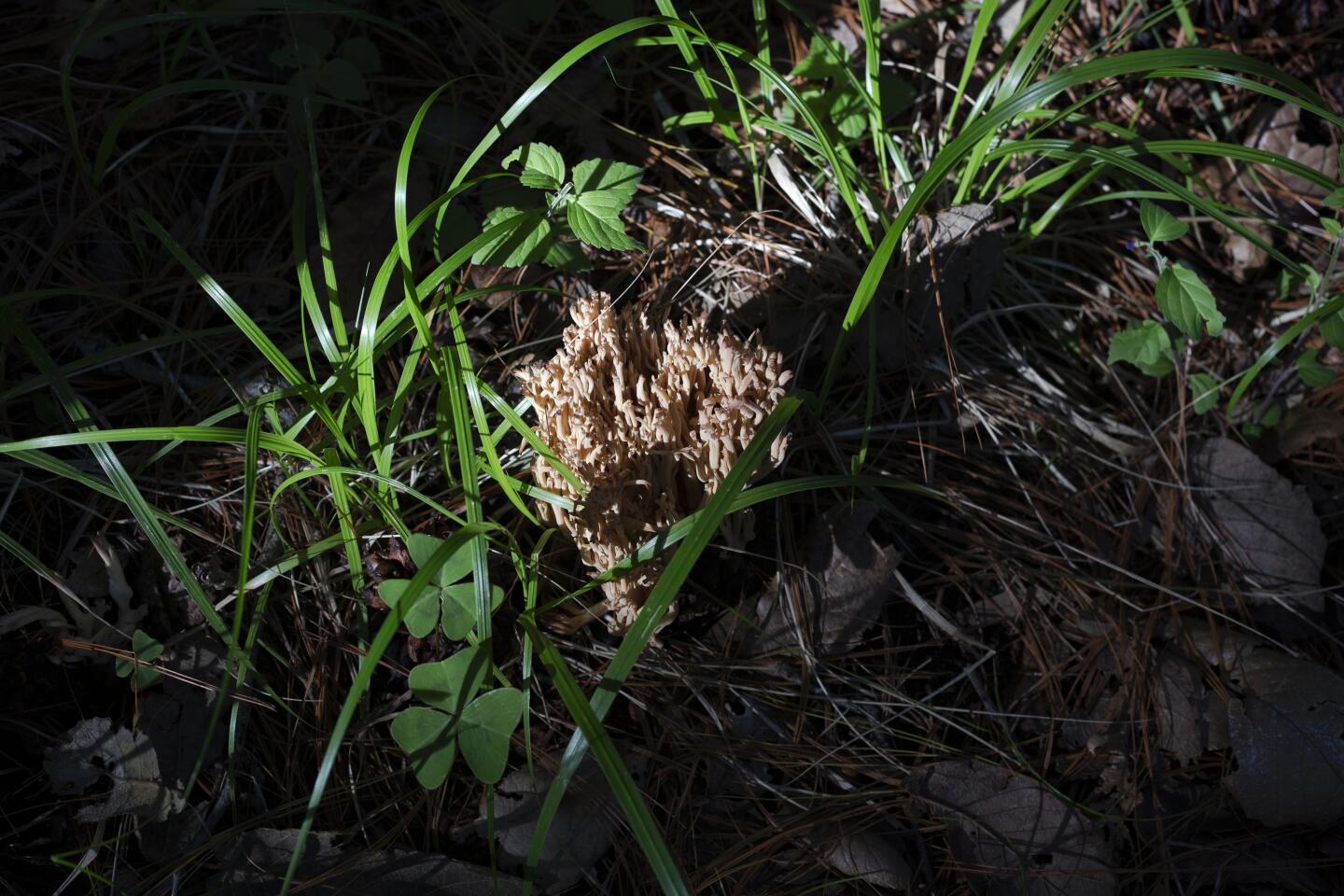
Kuini jantsiri, or bird’s feet mushrooms, are abundant during Cherán’s mushroom season and are generally used to prepare traditional stews called atapakuas. During the years of heavy deforestation, mushrooms couldn’t grow without the detritus of falling leaves. (Felipe Luna / For The Times)
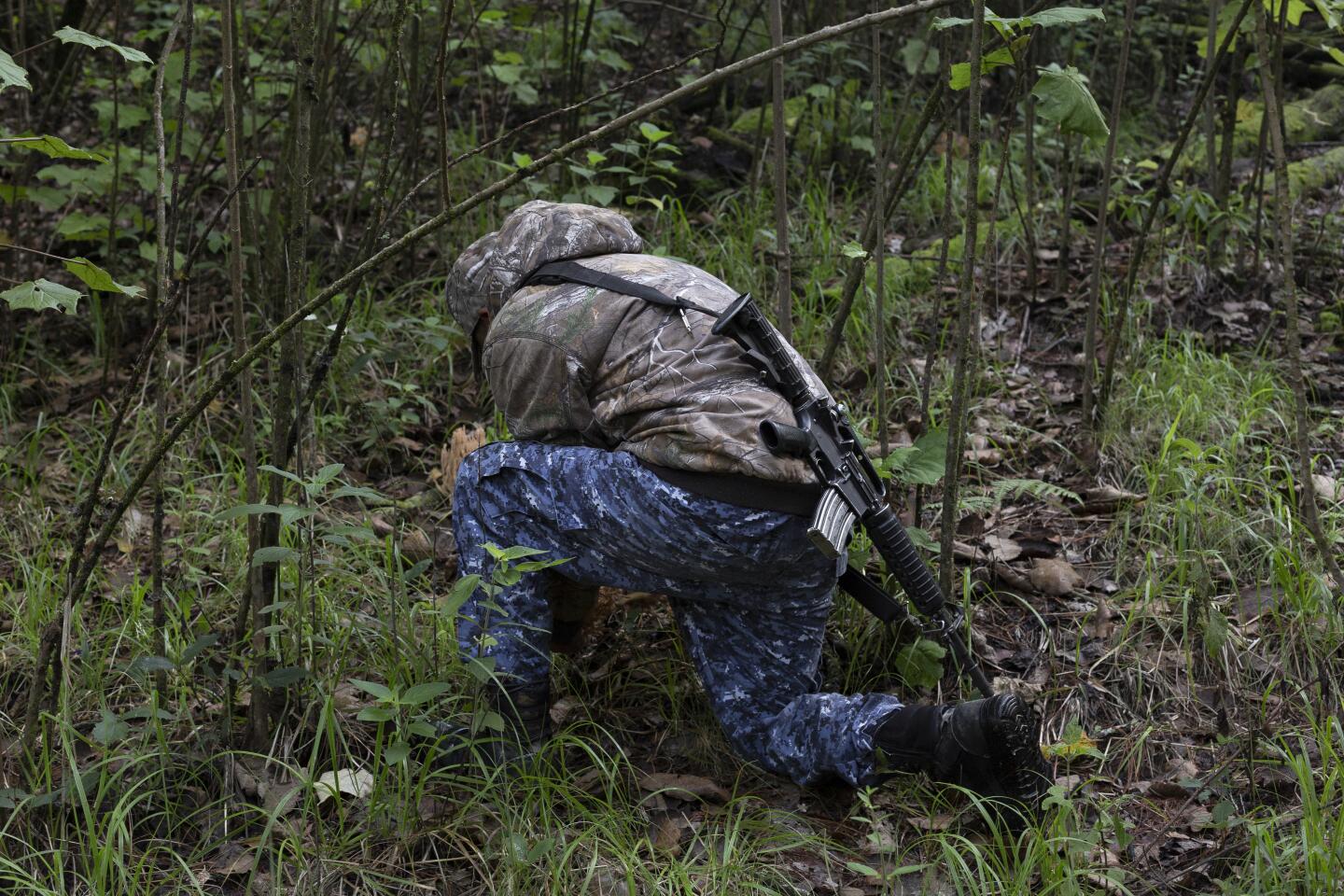
Members of the ronda comunitaria collect wild mushrooms while on patrol to cook meals in campfires or to take home to share with family members. (Felipe Luna / For The Times)
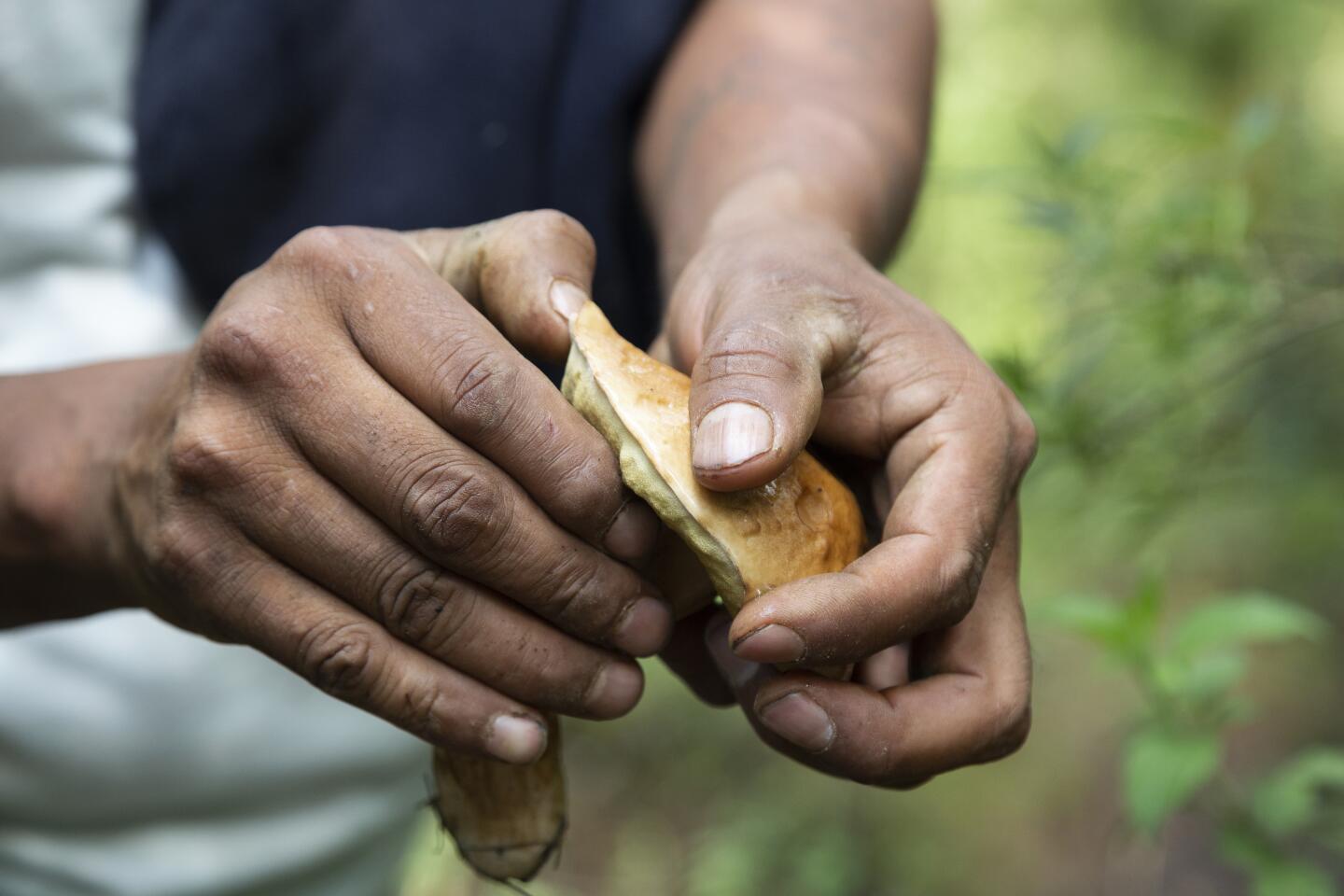
Héctor Campanur holds a panza de res, or ox stomach, a wild mushroom that when grilled resembles the taste of steak. (Felipe Luna / For The Times)
Advertisement
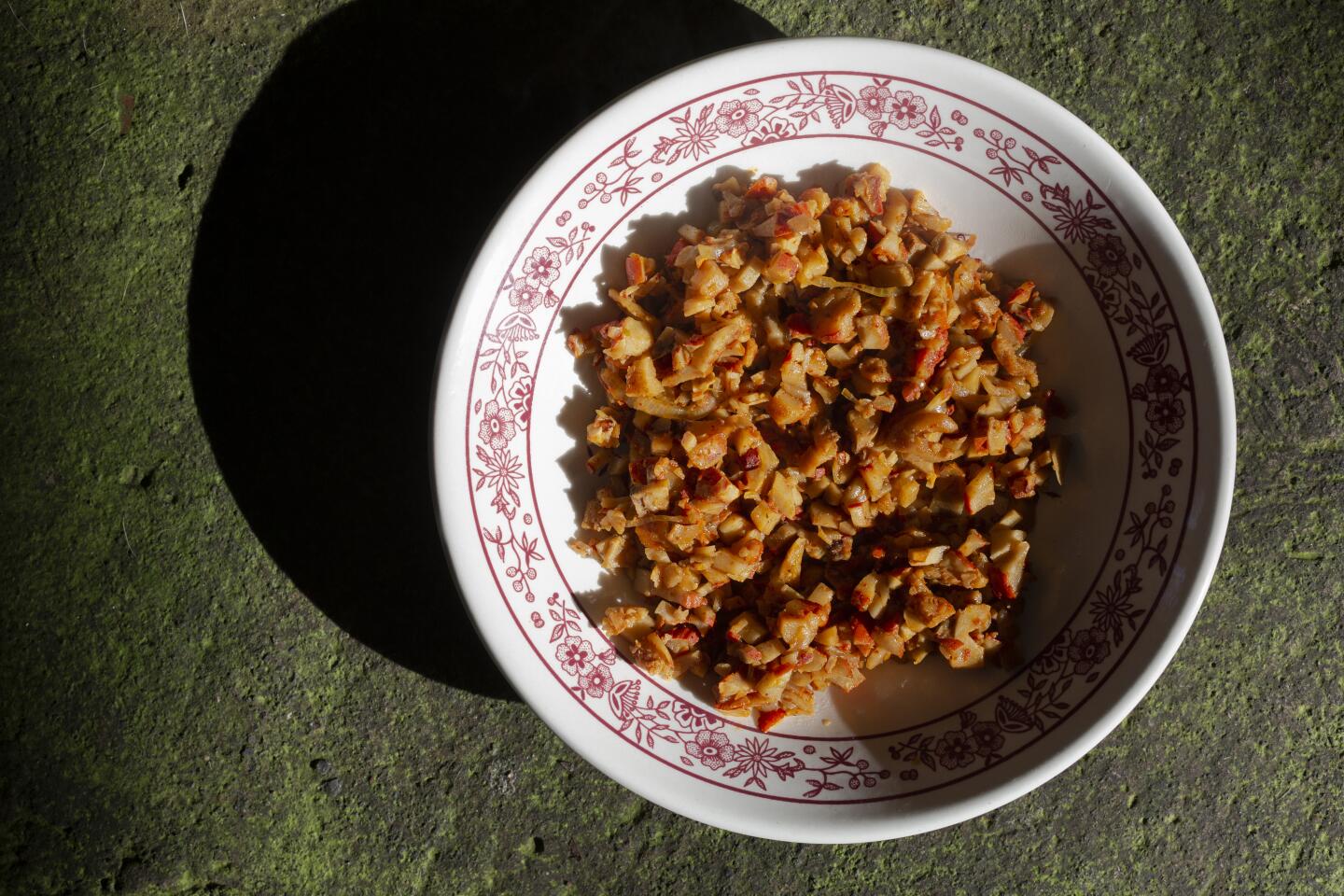
Rosa Huaroco’s picadillo de hongos, made with minced trumpet mushrooms, fried with garlic, onion and lard. (Felipe Luna / For The Times)
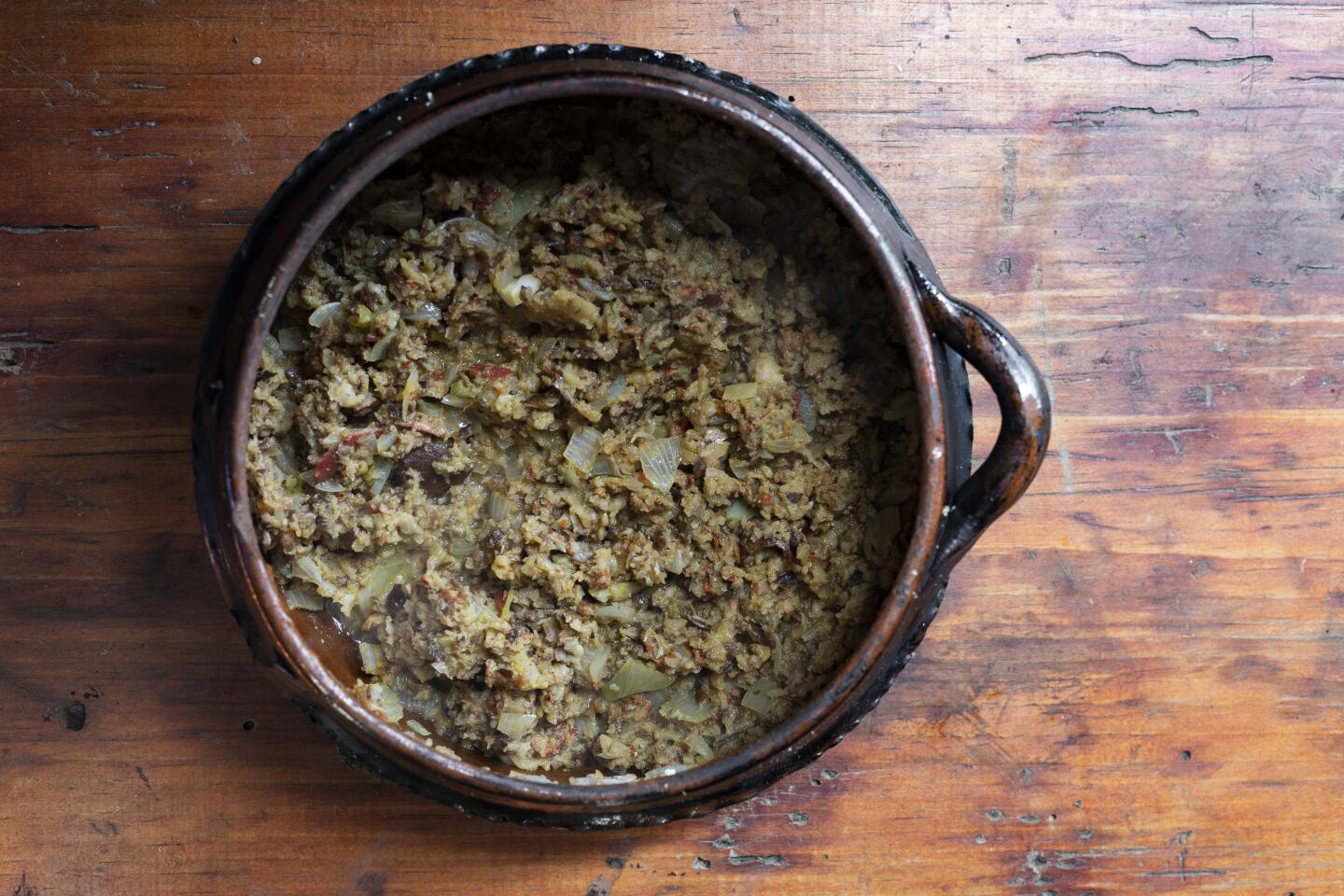
Doña Mela (a.k.a. Imelda Campos) made this version of picadillo de hongos on an open fire in her “parangua” (traditional kitchen). (Felipe Luna / For The Times)
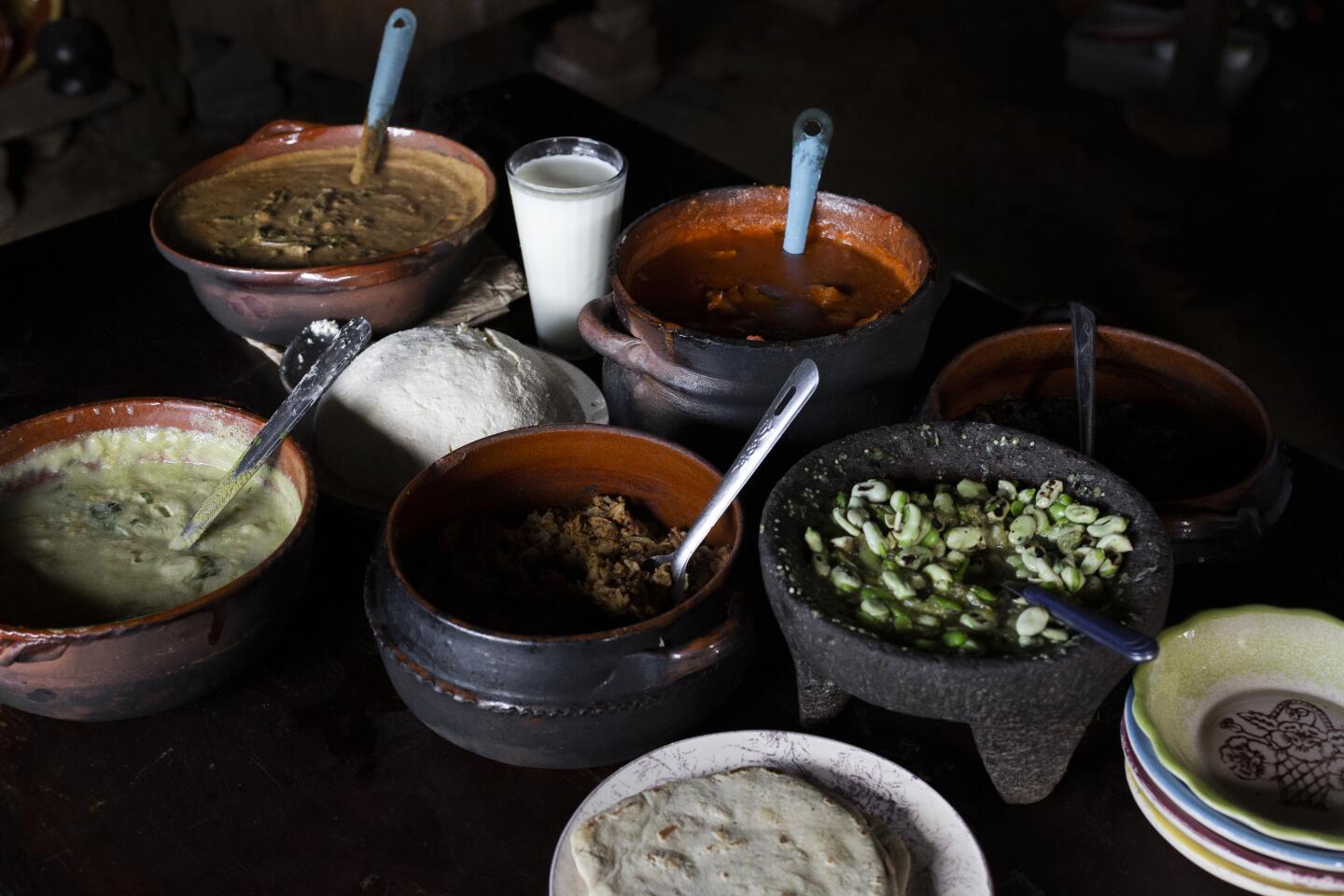
A variety of traditional dishes by Imelda Campos, widely regarded as the finest cook in town, prepared in a parangua, a traditional Purépecha kitchen. Atapakua de habas, atapakua de carne, pipián con lengua de vaca (wild sorrel), tamal de huitlacoche, huitlacoche frito and picadillo de trompa de puerco (trumpet mushrooms). (Felipe Luna / For The Times)
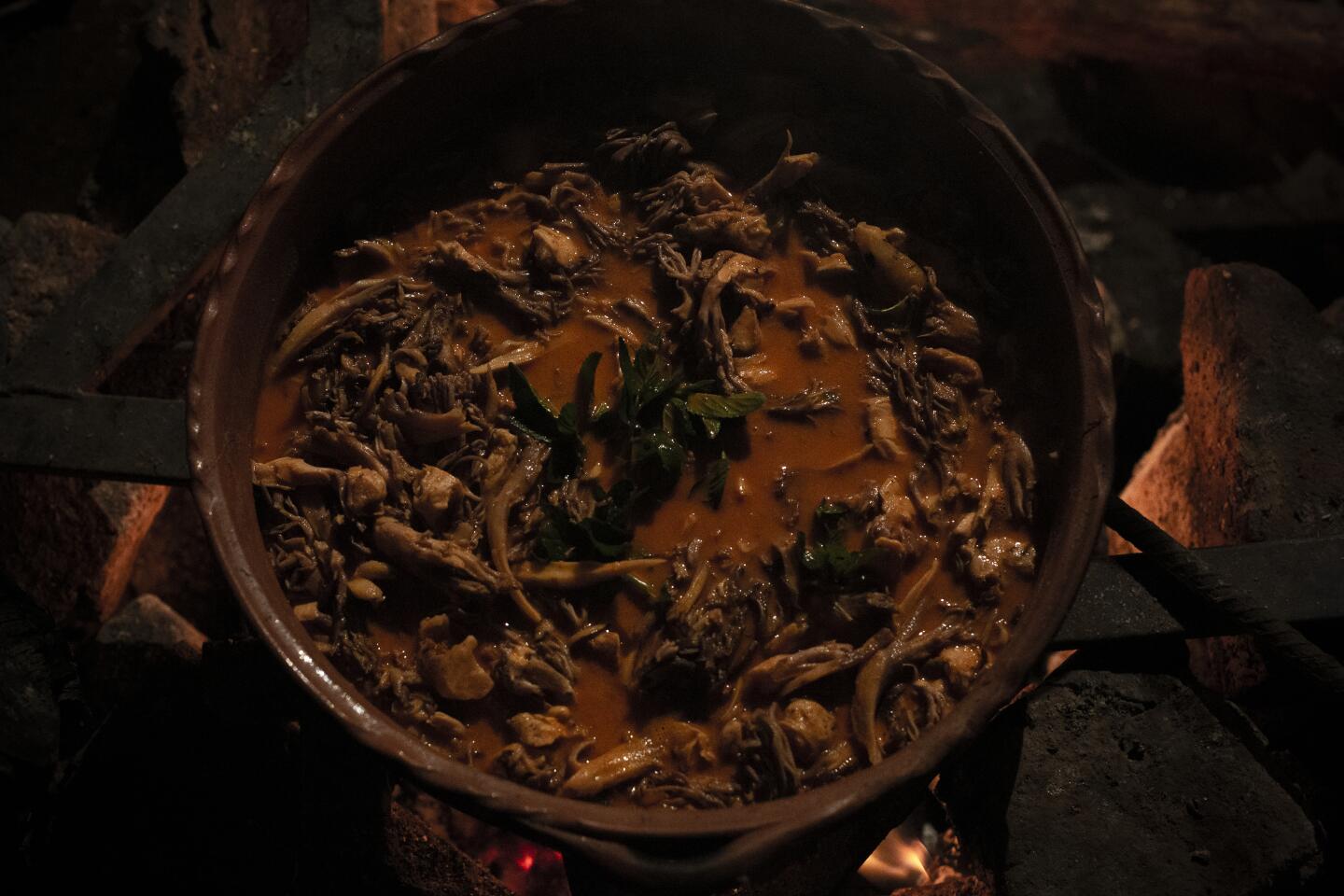
A thick red atapakua of bird’s feet mushrooms prepared at the only remaining fogata in Cherán, now called la inmortal. After the 2011 insurgency, the town’s transformation took place gradually around 189 bonfires scattered across every block and street corner. At first, the fogatas functioned as a security measure that doubled as a public kitchen. (Felipe Luna / For The Times)
